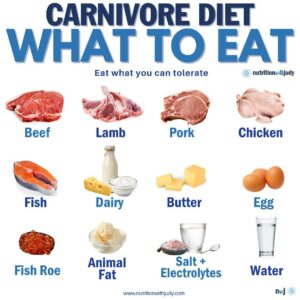
Essential Guide to Low Histamine Diet Solutions for Improved Well-Being
In today’s fast-paced world, many individuals are discovering the impact of histamine intolerance on their health and quality of life. Symptoms such as headaches, digestive issues, and skin rashes can significantly affect daily activities, making it essential to understand how a low histamine diet can provide relief. This article delves into effective strategies for managing histamine levels through dietary adjustments, focusing on foods to embrace and those to avoid.
The benefits of adopting a low histamine diet extend beyond mere symptom relief; they can enhance overall well-being and improve digestion. By exploring a variety of low histamine foods, meal plans, and recipes, you'll be empowered to make informed choices. Let’s journey through five impactful solutions that can help improve your quality of life, one meal at a time.
Key takeaways include insights into the essential foods to consume, effective cooking techniques, and practical meal planning tips designed for those with histamine intolerance. By the end of this article, you’ll be equipped with the tools necessary to thrive with a low histamine lifestyle.
Choosing Low Histamine Foods for Optimal Health
Building the foundation of a low histamine diet begins with choosing the right foods. Understanding which foods are low in histamines can profoundly influence your physical health and emotional well-being. Incorporating a variety of low histamine fruits, vegetables, grains, and proteins can not only help manage histamine intolerance but can also offer nutritional benefits.
Fresh Fruits and Vegetables to Include
Fruits such as apples, pears, and watermelon are excellent choices for a low histamine diet. These fruits are known for their hydrating properties and low histamine levels, providing a refreshing snack option. Avoid high histamine fruits like bananas and avocados, which can trigger symptoms for many individuals.
Low histamine vegetables include carrots, cucumber, and zucchini. These vegetables can be enjoyed raw or cooked, making them versatile for meal prep. When incorporating fresh produce into your meals, always consider sourcing organic options, as they generally contain fewer preservatives and additives.
Grains and Proteins for a Balanced Diet
When it comes to grains, options like quinoa, rice, and oats are all low histamine choices. These grains provide the necessary energy to keep you active throughout the day without causing histamine-related issues. They can be combined with fresh vegetables to create satisfying meals.
For protein sources, fresh meats like chicken and turkey are safe options, while fish should be consumed cautiously, as some seafood can be high in histamines. Explore low histamine proteins that are minimally processed and avoid canned options, which can often contain high levels of histamines due to fermentation processes.
Low Histamine Snacks and Drinks
Finding satisfying snacks can be challenging on a low histamine diet. However, options like fresh fruits, raw nuts, and homemade trail mix can provide you with a delicious mid-day boost without the worries of histamine sensitivity. For beverages, consider herbal teas and coconut water, ensuring to steer clear of high-histamine drinks like fermented beverages.
When snacking or drinking, make it a habit to read food labels thoroughly to avoid hidden high histamine ingredients. Understanding how to manage what goes into your body plays a crucial role in maintaining optimal health.
Creating a Low Histamine Meal Plan
With a vast array of low histamine foods available, developing a structured meal plan can be an effective way to manage your dietary needs. A well-prepared low histamine meal plan can significantly enhance your life, allowing you to enjoy meals with friends and family without anxiety.
Step-by-Step Meal Prep Strategies
Start by planning your meals for the week, taking into account low histamine food options. Preparing ingredients in advance, such as chopping vegetables or marinating low histamine proteins, can streamline the cooking process. Adopting a meal prep routine can save you time and minimize stress around mealtimes.
Incorporating Low Histamine Recipes
Exploring low histamine recipes can make healthy eating enjoyable and diverse. Try recipes featuring fresh ingredients, like a quinoa salad with cucumbers and apples dressed in olive oil. Experimenting with spices means you can still enjoy flavorful meals without the repercussions of histamine intake. When cooking, utilizing techniques such as steaming or grilling can help preserve the integrity of low histamine ingredients.
Common Mistakes and How to Avoid Them
One common pitfall when adapting to a low histamine diet is overlooking ingredients that may seem safe but contain high levels of histamines. Ensure that you are aware of lesser-known high histamine foods such as certain cheeses, processed meats, and fermented products. Keeping a food diary may also help track which items may cause unwanted reactions, aiding in managing your histamine levels better.
Understanding Histamine Sensitivity and Intolerance
Histamine sensitivity can manifest in various ways, often resulting in physical discomfort. By recognizing symptoms of histamine intolerance, you can identify what triggers your reactions and adjust your diet accordingly.
Identifying Symptoms
Symptoms can range from headaches, hives, asthma-like symptoms, to gastrointestinal issues. Understanding how your body reacts to different foods can help you pinpoint clear dietary patterns, leading to a significant impact on your quality of life. Always consult healthcare professionals when experiencing unexpected symptoms, as they can provide personalized advice and insights.
Consulting with Nutrition Experts
Working with a nutritionist experienced in histamine intolerance can provide tailored advice to craft an ideal low histamine diet based on personal sensitivities. They can help you develop practical strategies for navigating shopping and meal preparation while ensuring you receive adequate nutrition despite restrictions.
Q&A: Low Histamine Diet FAQs
What are the main foods to avoid on a low histamine diet?
Common high histamine foods to avoid include aged cheeses, cured meats, fermented foods, and alcohol. Reading labels and becoming aware of hidden ingredients can help manage your intake effectively.
Can my histamine intolerance improve over time?
Many people find that as they adopt a low histamine diet, their symptoms can improve. However, this varies by individual, and ongoing management and dietary adjustments may still be necessary.
What role do probiotics play in histamine intolerance?
Certain probiotics can help with gut health, but some strains may produce histamines. It’s crucial to choose histamine-free probiotics. Consulting with a healthcare professional for guidance can be beneficial.


By implementing the strategies outlined in this article, you will be well on your way to tapping into the benefits of a low histamine diet. Remember, it is essential to listen to your body and consult with medical professionals to create a personalized plan that suits your needs.
Conclusion: Navigating Your Journey to Low Histamine Living
The journey to managing histamine intolerance may seem daunting at first, but with the right tools and knowledge, it can transform into a path of wellness and flavor. As you navigate low histamine foods and create a meal plan that fits your lifestyle, trust that improvement in your well-being is within reach. Embrace this journey and flourish with an anti-histamine diet that supports not only your body but also nourishes your joy in eating.